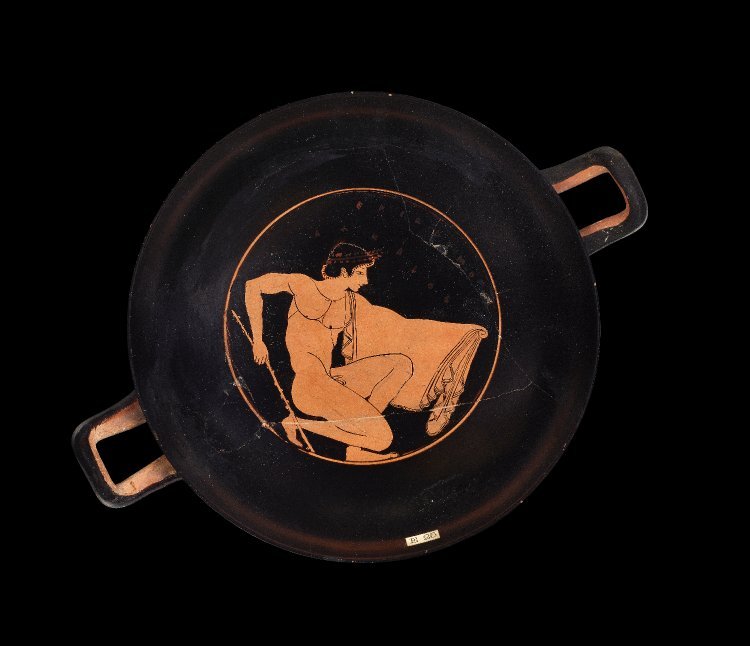A quick note on καλός inscriptions.Why are there (seemingly) random declar
A quick note on καλός inscriptions.Why are there (seemingly) random declarations of adolescent boy beauty on ancient Greek pottery? It is this question that has been puzzling classicists for over a century. Could these vases be viewed as fan club memorabilia? This post will give a quick overview on what these inscriptions are, examples, and a possible interpretation. As well as signatures and labels, declarations of young male beauty (‘καλός inscriptions’) are common on Attic vases. καλός (ΚΑLΟΣ when capitalised, and pronounced ‘kalos’) in ancient Greek means something along the lines of beautiful/ fine/ good, but is usually translated as ‘beautiful’ in the case of these inscriptions. Female versions of such inscriptions are rare. The shown example dates to ca. 500 BC. Its text is faded and hard to read, but ‘ΕΠΙΔΡΟMΟΣ ΚΑLΟΣ’ (Epidromos is beautiful) is inscribed. One of the most common καλός inscriptions was 'Λέαγρος καλός’ (Leagros is beautiful). A good example of the latter is at the MFA, Boston. This storage jar depicts two nude youths jumping together; one inscription reads ‘Leagros is beautiful’, another, ‘Leagros is beautiful, yes indeed!’. It is interesting to note that Leagros seems to have become a distinguished general in the Athenian army.It is fairly certain that these inscriptions were not done to reflect the feelings of the craftsman -nobody would have really cared what they thought. It does, however, reflect what the craftsman thought would sell: thus, the feelings of potential customers. Professor Richard Neer of the University of Chicago notes that “it is even possible that some drinking groups would single out particular boys of praise, like fan clubs or chat rooms today. Vase painters catered to their enthusiasms.”The shown artefact is © Trustees of the British Museum, and via their online collections: 1848,0320.1. Recommended reading: Art & Archaeology of the Greek World: A New History, c. 2500 - c. 150 BCE, Richard T. Neer (Thames & Hudson 2012). -- source link
Tumblr Blog : ancientart.tumblr.com
#history#archaeology#art history#pottery#ancient history
